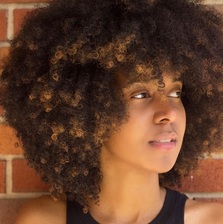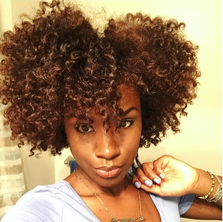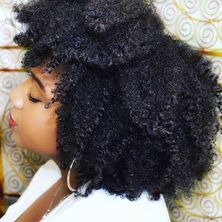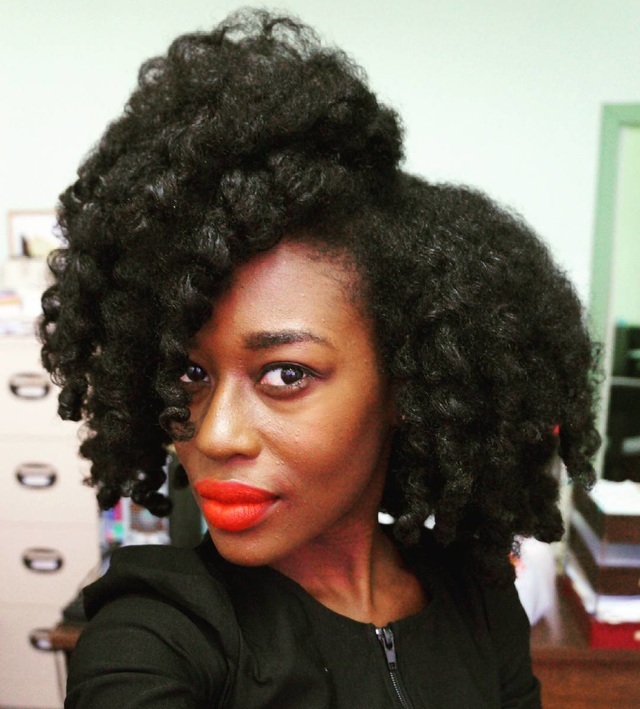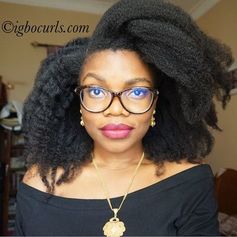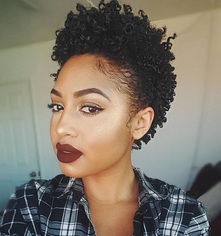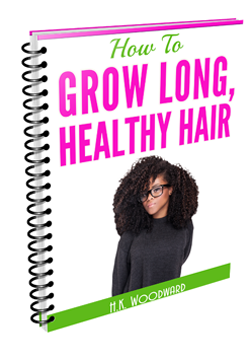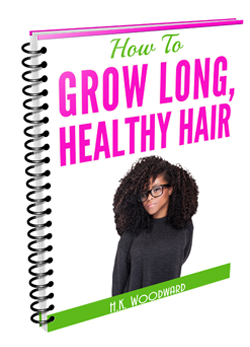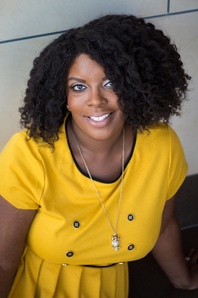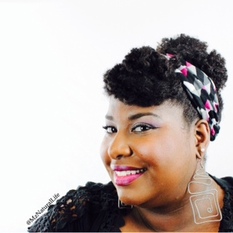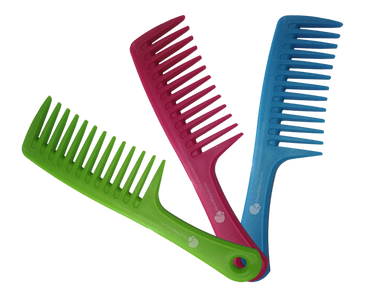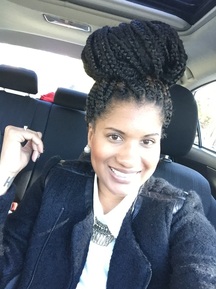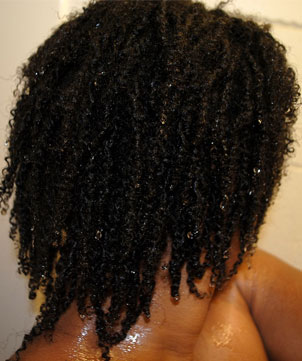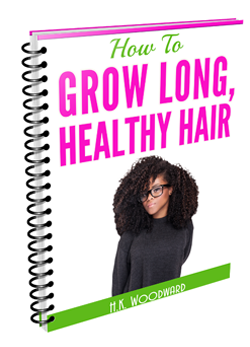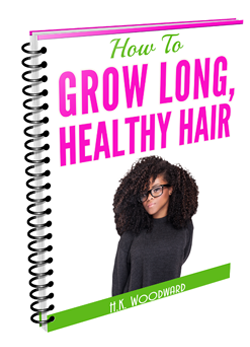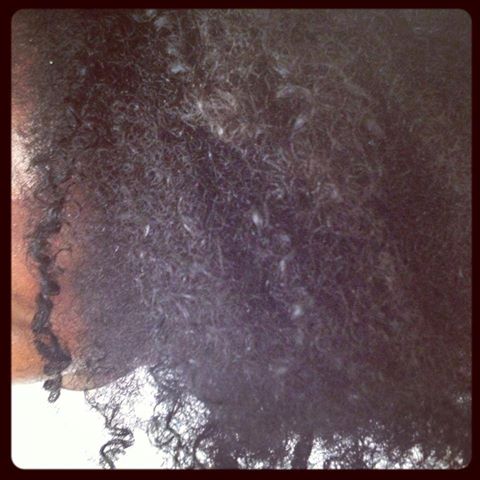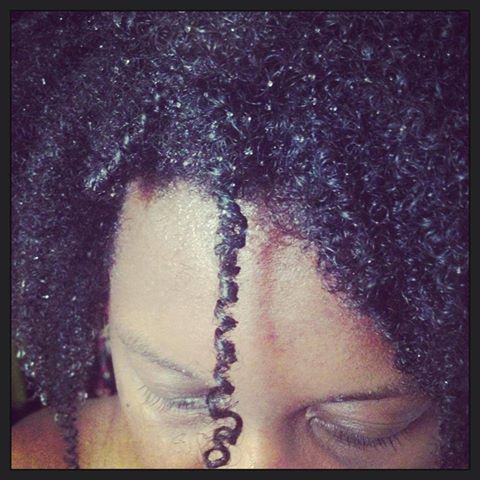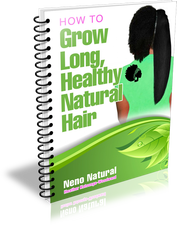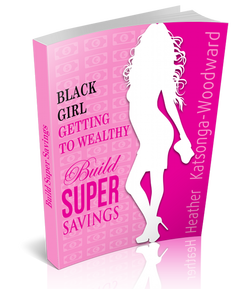|
I have a very good detangling and combing session once a week during my weekly wash.
A lot of my friends, even the natural-haired ones, find it very shocking that I don't comb my hair at all during the week I just finger comb. Combing and brushing has been such a "given" part of of our upbringing that removing it from our routine is almost akin to not brushing your teeth! Anyway! These are the three things that I have learnt will break your hair when it comes to combing:
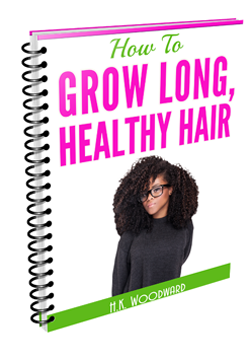
Natural hair doesn't "like" being handled when it's dry or in fact even when it's very wet. Before detangling your hair you should "plasticize" to soften it and make detangling easier.
What is a plasticizer? It's anything that softens hair and makes it easier to detangle and comb. What products can be used for plasticizing? Water, leave-in-conditioner, a creamy moisturiser, oil and even a little rinse-out conditioner. Basically, anything that makes the hair more slippy. My hair is quite thick and course so I find that thick, creamy moisturisers and leave-in conditioners work best for plasticizing my hair. I usually also follow with an oil to seal. For thin hair you might prefer to use just the oil or a very loose conditioner. How much plasticizer should be added to hair? If you're about to wash your hair, then you can add as much as you want. However, if you just want to detangle and style your hair for the day then use just a little bit. I probably use about a tablespoon's worth given my hair thickness. If your hair's thin you might prefer to use less product so that your hair isn't weighed down. Any other tricks? Why yes, when I am plasticizing my hair for styling rather than before my weekly wash I cover my hair in a shower cap whilst I shower and get ready as it helps my hair soften and makes it far easier to handle.
The Queen of Kinks conditioner can be used for full routine wash, that is, detangle + shampoo + deep condition + moisturize with a different product application at each stage.
Alternatively, if you’re pressed for time or if your hair isn’t that dirty you can detangle your hair, twist it to section, let it sit then rinse, moisturize and go in one easy step. Because the detangler and conditioner are one product you save on time. It’s super convenient as you will see in the below video. Essentially, you are co-washing and deep conditioning at the same time: 10 Tips on How To Detangle Natural Hair With Minimal Breakage (great for both kids and adults)11/3/2015
1. Detangle when you have two or three free hours, e.g. when you're watching TV.
2. Do not detangle dry hair. Spray the hair with just water then add some detangling cream or a leave-in conditioner or even a rinse-out conditioner to soften the hair further, even if you're about to wash. You don't need much product, a little goes a long way. 3. Use a high quality wide tooth comb with smooth edges. 4. Don't detangle on an empty stomach, you're only going to rush and do it badly. 5. Move section by section. 4 to 12 sections should be enough depending on the thickness of your hair and how tangled your hair is. Even if I don't pin my hair up I don't attempt to work on all the hair in one go. I focus on one area at a time. 6. Ensure that your fingernails are well manicured and that you don't have any dry skin that hair will get caught on to. 7. Detangle with your fingers first. Fingers are better able to navigate knots. 8. Work your brush or comb from tips to roots. I have also discovered that finger-combing only is not for everyone. If you have very thick or course hair you need to use a comb and possibly a brush to some extent. Thin, fine and loosely curled hair fares much better on a finger-combing only routine. 9. Twist the detangled section so that it doesn't retangle or get mixed up with hair that has not yet be detangled. 10. Always detangle before you shampoo hair and then again after you have applied conditioner. Remember that damaged hair is more prone to breakage than healthy hair so handle weak and damaged hair with extra care :)
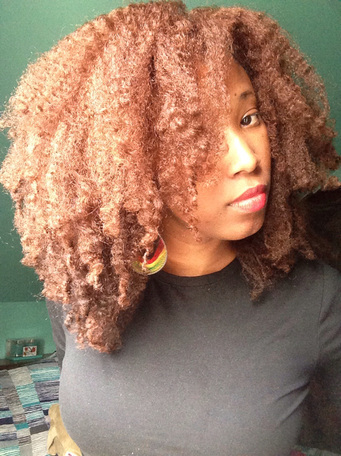 Click for Queen Samantha's hair styles, journey & regimen Click for Queen Samantha's hair styles, journey & regimen
At some point, we have all made these mistakes. Managing natural hair is very different to managing relaxed and it does take a little time to get the hang of it so don't worry if you're still learning.
1. Not Moisturizing Daily Our hair is naturally very dry. If you moisturize it in the morning, it will be dry by evening especially if it’s a very warm day and you were wearing your hair loose. To keep your hair soft you need to moisturize it daily with water, a good moisturizer and if it needs it, an oil or butter to seal. 2. Thinking Protective Hairstyles Are Only For Winter Protective styles protect your hair especially the ends from breaking and splitting. Our hair is most vulnerable when it’s flying loose rather than when it is pinned up, bunched up in a twist or in a braid. In winter, the air can be very dry and the wind intense so protective styling helps to prevent exposure to these extreme elements. In the summer, if it’s hot but not humid your hair can also get very dry so protective styling is actually ideal for both extremes. In fact, I find my hair gets more dry and even wiry on very hot days rather than in winter. You should use protective styling whenever the weather is too hot, too cold or windy because it helps with all extreme weather changes that make hair more vulnerable. 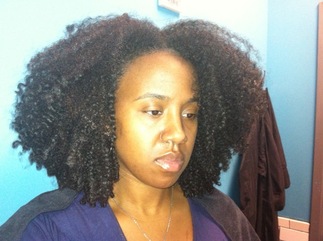 Click for Queen Kiki's hair styles, journey & regimen Click for Queen Kiki's hair styles, journey & regimen
3. Following Someone Else’s Regimen Without Adapting It For Your Own Hair
It’s completely normal to do this. Especially for someone who had relaxed hair for as long as I did, you don’t know what to do with natural hair. You end up following your favourite YouTuber or your best friend because you don’t know what else you should be doing. What you should be doing is trying everything out and if it doesn’t work on your hair: changing it, adapting it or ditching it until you discover what works for you. 4. Not Trimming So many people in the natural hair community are so obsessed with length that they don’t trim at all. The result is that they have thick roots but if they pull a bunch of hair out they only have 5 strands at the longest length. In some cases it can look a little extreme (and even silly). Trimming hair helps with health and growth. Neaten the ends up when they get messy or trim a little to neaten every 4 to 6 weeks as standard. 5. Braiding & Weaving Too Often  Click for Queen Courtney's hair styles, journey & regimen Click for Queen Courtney's hair styles, journey & regimen
I absolutely have nothing against braids and weaves. However, your hair does need a rest.
If you move from one set of braids or one weave to the next without a two week gap, at least, in between, you don’t get to observe your hair’s condition. Your hair edges could be getting thinner and thinner and the extensive plaiting may also be thinning your hair out. This was the reason I went natural to begin with. Combining braids and relaxer thinned my hair out very badly. By having a gap between braids I discovered the issue and took what was at the time the drastic measure of going natural. 6. Prioritizing Length Over Health & Enjoying The Journey Being natural shouldn’t be about your next length goal because that sucks the fun out of it. Whatever length of hair you have, enjoy it. I have never had a length goal, only a desire to keep my hair healthy. Of course everyone wants to observe growth but if that is your sole focus then you won’t enjoy the days when you’re in a TWA or transitioning. Just enjoy it! 7. Not Developing An Anti-Tangle Regimen As Hair Grows As your natural hair grows it will get more tangles and your regimen has to change to accommodate that. Your wash routine and your night time routine especially have to account for the fact that loose strands will tend to tangle and it will drive you mad.
Can you think of more treacherous mistakes that we make? Then make a comment.
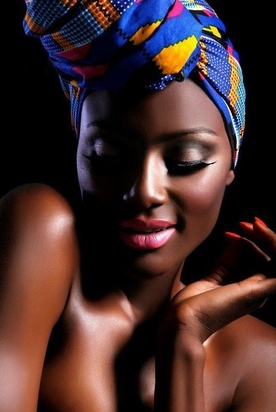 Find your next style on my instagram page Find your next style on my instagram page
A pre-shampoo detangler is designed to be shampooed out. If it the detangler is specifically classified as being pre-shampoo then it contains too much of one or more ingredients to be left on.
Keep in mind that some ingredients in hair products are only safe to leave-on in given concentrations and if left on for too long could damage your hair or scalp. This is not a bad thing – conditioners are also rinse-off products for the same reason. In some of my pre-shampoo detangler recipes for instance, I include a lot of glycerin for extra moisture and softening but if they were applied as leave-on products your hair could get very dry. You don't want to leave a high concentration on glycerin on your hair A leave-on detangler on the other hand can be safely applied and left on hair without any adverse effects. 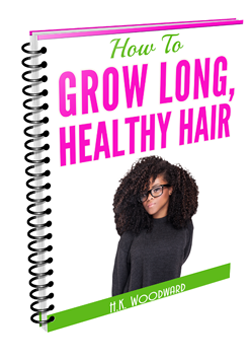
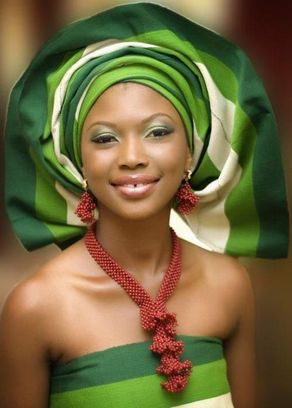 Click for my Pinterest inspiration board Click for my Pinterest inspiration board
A detangler can be a rinse-off or leave-on product.
If the detangler is designed to be rinsed off you would still need to follow it up with a conditioner because if it's been specially created for detangling then it will not contain much in the way of conditioning ingredients. That said, a detangling conditioner is designed to be both a great rinse-off detangler and a fantastic conditioner. It does both jobs. Such a product could be used before a shampoo as a pre-poo detangler as well as after a shampoo to condition the hair. The pre-shampoo application would be mostly washed out by the shampoo thereby making an additional post-shampoo application necessary. 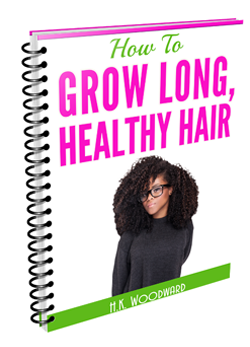
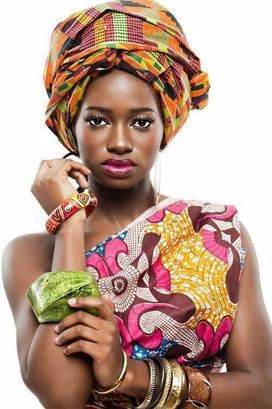 Click for my Pinterest inspiration board Click for my Pinterest inspiration board
A leave-in detangler is a specialized moisturizer. Some moisturizers are very good at softening hair whilst others are far better at detangling; calling a moisturizer a detangler just makes it clear that the moisturizer in question is designed to help remove tangles in hair. As such, you can expect a detangler to have a higher concentration of ingredients known to detangle hair.
How Do Detanglers Work? Detanglers work by smoothing the hair cuticle down. This is done by other filling in gaps in damaged hair or by lowering the pH - a low pH cause the shingle-like layers of the hair cuticle to lie flat and in this position they are less likely to get caught onto neighboring hair to create a tangle. Ingredients in hair detanglers also lubricate the surface of hair. The more lubricated the hair is the easier it is to separate already tangled strands. Which Ingredients Detangle? Silicones (e.g., dimethicone or cyclomethicone) Silicones bind to the surface of hair and lubricate the hair cuticle to help with detangling. Acidifier (e.g. citric acid) Acidic ingredients lower the pH of a detangler. The lower pH strengthens the hydrogen bonds between keratin molecules in hair, smoothing the hair cuticle and making it easier to separate hair strands from each other. Hydrolyzed Proteins (e.g. oat protein) Proteins helps to repair damaged keratin by filling in any damage along the hair cuticle. This creates a smoother hair cuticle that is less prone to tangling. Cationic compounds and polymers, e.g. BTMS Cationic compounds also lubricate and smooth out the hair cuticle. Carrier Oils Oils lubricate our hair and help to fill in any gaps in dry or damaged hair. This creates softer, more pliable hair that is less likely to tangle. 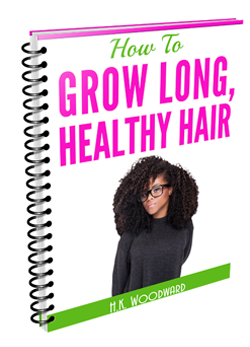
Get your FREE ebook on How To Grow Long, Healthy Natural Kinky or Curly Hair. You might also like: Ref: Hair Detangler Why Detangling DAMP (not dry or very wet) Leads To Less Breakage! The Scientific Explanation.10/1/2014
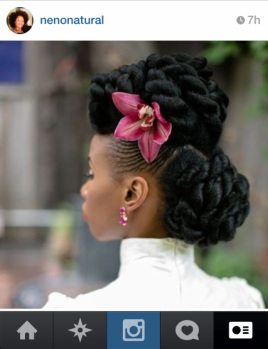
I'm going to get straight to the point:
The kinks in our hair are points of weakness so kinky-curly hair is weaker than straight or wavy hair by nature. WET HAIR The average black hair will break after 33 grams of strain when wet; that figure is 43 grams for Caucasian hair and 63 grams for Asian hair. DRY HAIR Dry hair can take more strain than wet hair, it will break after about 100 grams for Asian hair. If we extrapolate that to black hair, we're looking at about 53 grams of weight or strain before our hair breaks. DAMP HAIR Damp hair offers a happy compromise, not too dry to be brittle and not so wet that it's weak. So, in conclusion, to the extent possible detangle and comb damp her. 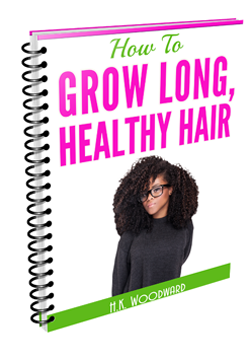
Get your FREE ebook on How To Grow Long, Healthy Natural Kinky or Curly Hair.
You might also like:--
When it comes to detangling it's a lot easier to show than tell so watch the video for the demo but here are a few tips before that:
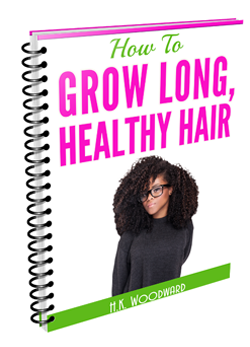
|
I now blog about wealth creation - so if you have any money questions meet me there, you can do all sorts of cool things like leave me a voicemail.
By Heather Katsonga-Woodward
I was a natural hair blogger and mixtress living between London & Chicago from 2012 to 2017. I always thought I was 4C but some say 4B; images below - you decide! Heather xx Categories
All
Archives
November 2016
|

